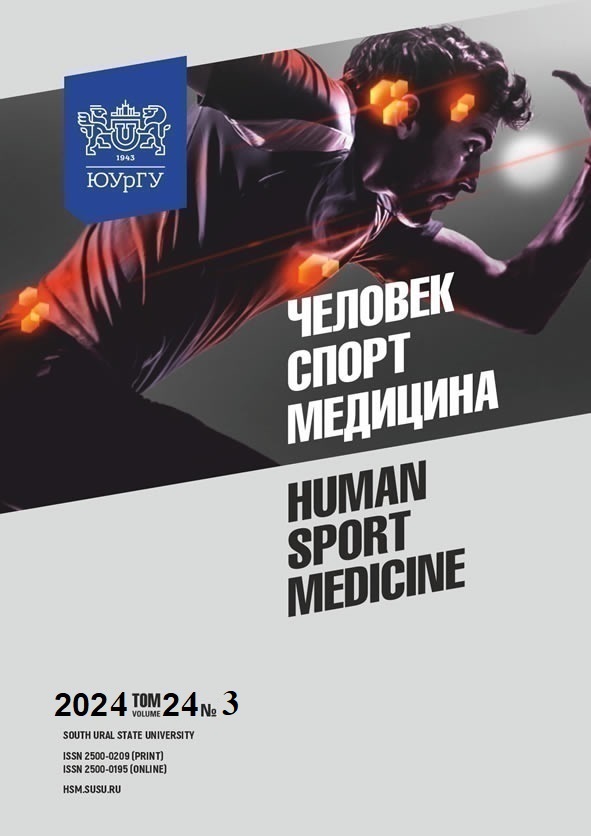MORPHOFUNCTIONAL AND BIOCHEMICAL FEATURES OF YOUNG MALES WITH DIFFERENT NEUROMUSCULAR RESPONSES
Abstract
Aim. The aim of this study was to comprehensively evaluate the morphofunctional and biochemical profiles of young males with different neuromuscular responses. Additionally, the study sought to delineate the features of physical performance inherent to each group. Materials and methods. The study enrolled 30 male full-time students, ranging in age from 18 to 22 years, who were participating in regular exercise without any health limitations. Following the methodology by V.P. Kaznacheev, their neuromuscular response was classified as “sprinter”, “mixed”, and “stayer”. Each participant was assigned to perform a stepwise treadmill test to exhaustion. The test consisted of successive stages, each lasting three minutes, with an incremental increase in speed of 1 km/h. Glucose and lactate concentrations and heart rate measurements were recorded at baseline, during pauses of 10–15 seconds between stages, and immediately following the cessation of the test. Blood biochemistry values were obtained at baseline and ten minutes post-exercise on the treadmill. Results. Upon analysis, it was observed that sprinters and those classified as mixed-type did not exhibit significant differences in the majority of morphofunctional parameters assessed. In contrast, the stayer group demonstrated significantly lower body mass, visceral fat, and grip strength measurements relative to the sprinter group. The mixed group occupied an intermediate position across the average values of most parameters examined. The glucose/lactate ratio throughout the test in young males with different types of neuromuscular responses underscored the substantial contribution of anaerobic glycolysis to muscle performance in sprinters and oxidative phosphorylation in stayers. Conclusion. The results of the exercise test indicate that sprinters rely more heavily on anaerobic glycolysis for muscle performance. Conversely, stayers depended to a greater extent on aerobic processes and had greater heart rate values at the anaerobic threshold. The mixed group occupied an intermediate position across numerous parameters
at rest and in response to physical exercise.
References
References on translit
Copyright (c) 2024 Human. Sport. Medicine

This work is licensed under a Creative Commons Attribution-NonCommercial-NoDerivatives 4.0 International License.















